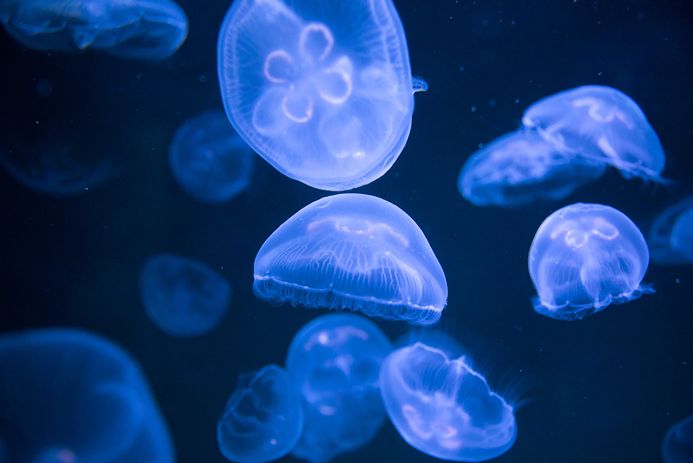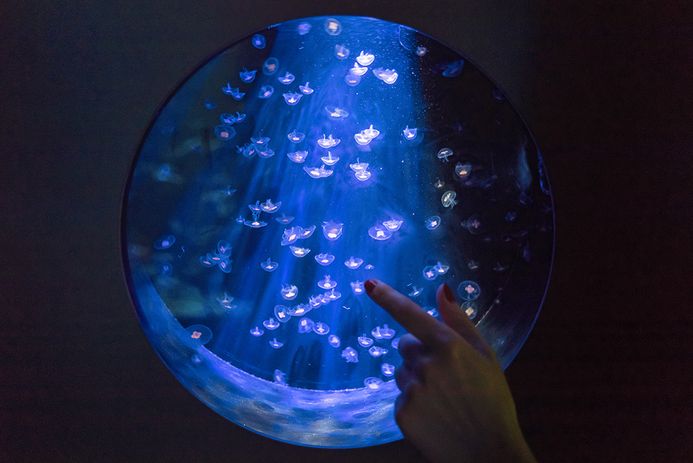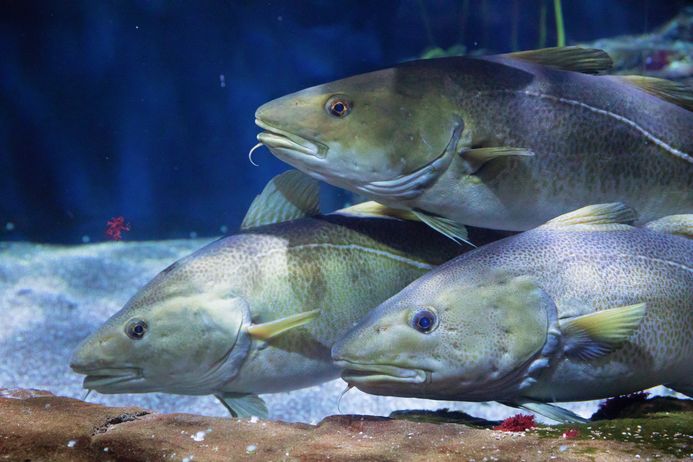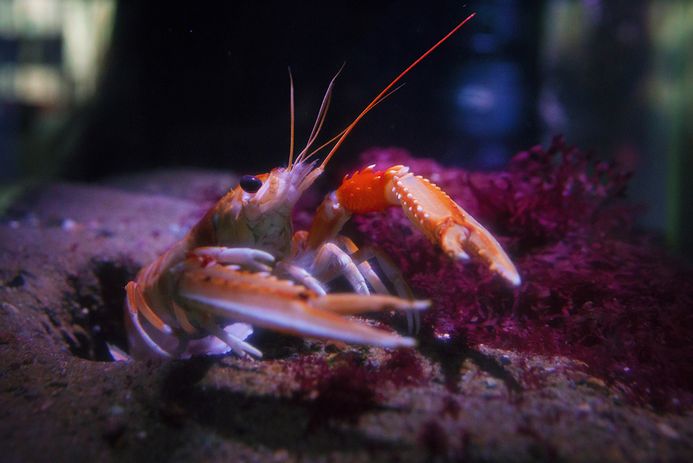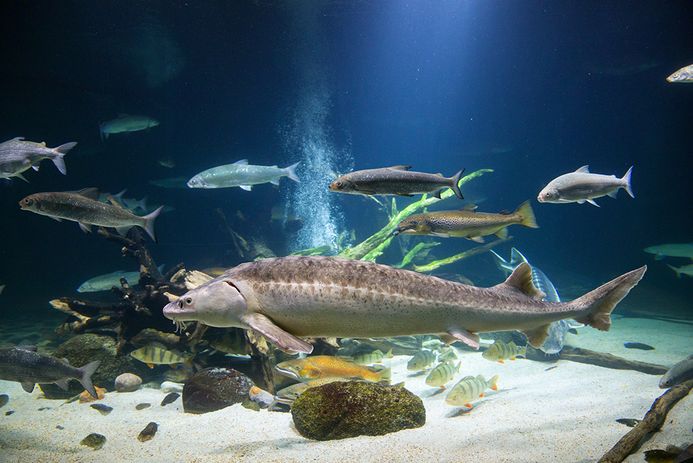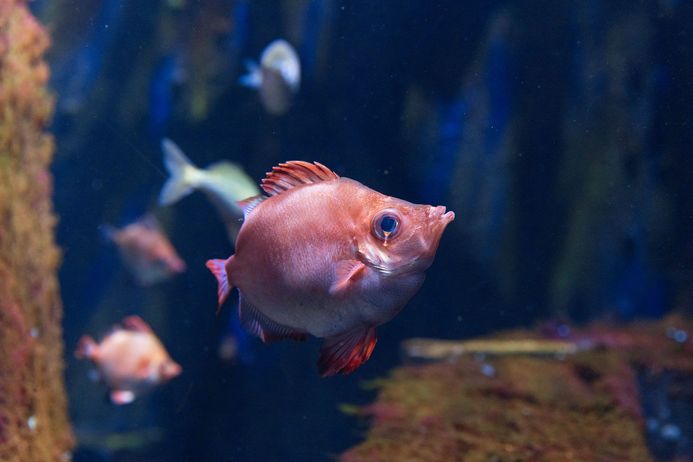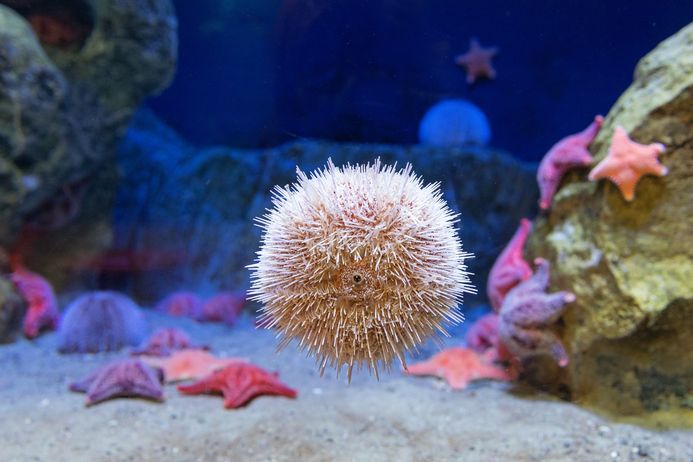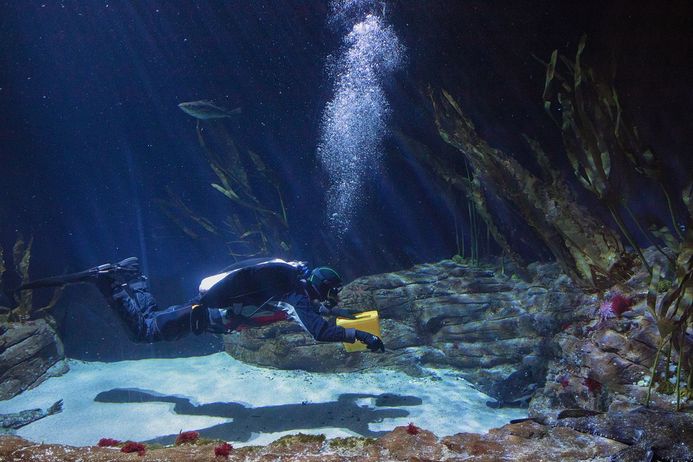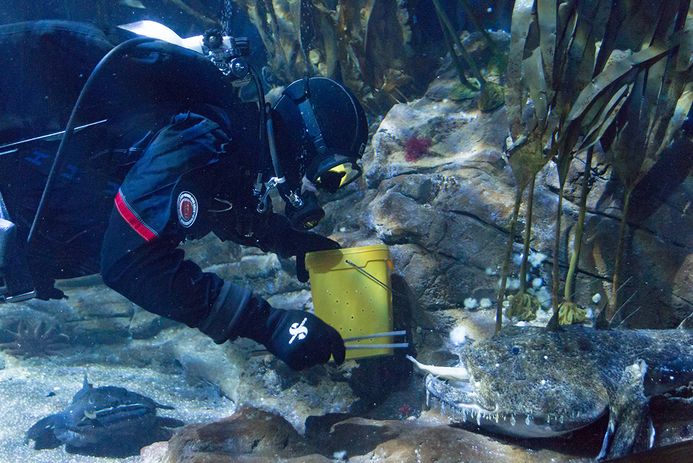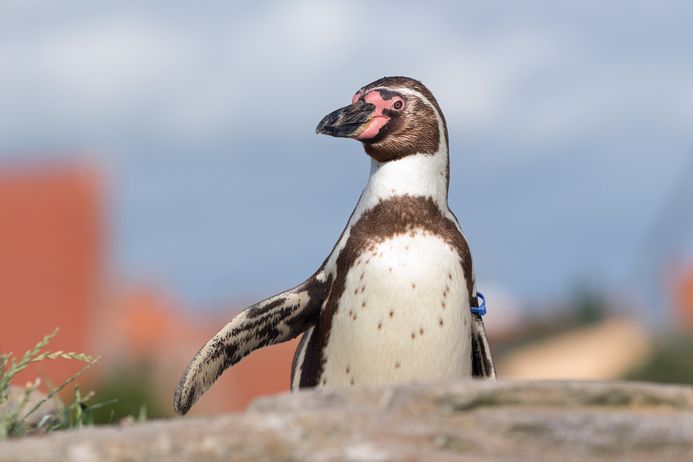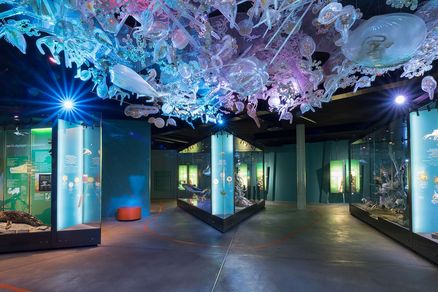Underwater journey at the OZEANEUM: From the Baltic Sea to the open Atlantic
Immerse yourself in the underwater world of the northern seas in the OZEANEUM's aquarium tours. Awaiting you are 50 tanks, some of them huge, in which you can discover different habitats and their respective inhabitants. All aquariums are equipped with sophisticated technology and are designed to be as natural as possible. Each tank has an individual water circuit that allows the salinity, water temperature and current to be adjusted for the animals.
Baltic Sea tour
Your underwater journey through the OZEANEUM's Baltic Sea aquariums begins in Stralsund's harbor basin and leads across the central Baltic Sea to the Kattegat. In show aquariums with a capacity of up to 126,000 liters of water live typical animals of this inland sea, such as box jellyfish, sturgeons and a silvery shimmering shoal of herring.
North Sea & North Atlantic tour
Where the journey through the Baltic Sea ends, your discovery tour through the North Sea begins. It leads from the Wadden Sea through the "Helgoland" tunnel aquarium to the "Open Atlantic". There, schools of mackerel, various rays and sharks swim in 2.6 million liters of water above the impressive replica of a shipwreck.
Open Atlantic
The heart of the aquarium area and also the largest aquarium in the OZEANEUM with a capacity of 2.6 million liters is the "Open Atlantic" tank. You can view its huge dimensions from two levels, with a depth of nine meters and a diameter of 17 meters. The acrylic pane of the 50 m² panoramic window is 30 centimetres thick to withstand the high water pressure.
The eye-catcher of the aquarium, which was redesigned in 2018, is an almost 11-metre-long shipwreck. This provides a habitat for various aquarium inhabitants, such as goldmaids, gilthead sea bream and sea bass. The wreck itself is a scaled-down replica of a cargo ship that ran aground in 1909.
Various species of rays glide majestically through the water, while schools of mackerel fascinate with their synchronized swimming behaviour.
You can also experience various shark species in the OZEANEUM's largest aquarium.
From the lower level, the so-called "seabed", the large nurse sharks "Anna" and "Anton" can be observed at their favorite resting place - the bottom of the tank.
The German Oceanographic Museum has been breeding smooth dogfish so successfully since 2017 that many of these animals can now be seen in the "Open Atlantic" tank.
Penguins
One of the OZEANEUM's public favorites are the Humboldt penguins on the roof terrace right next to the "Sea for Children". In their 120,000 liter underwater area, they can be observed swimming and diving just as well as on their breeding rock. Humboldt penguins are an endangered species. The feathered swimmers at the OZEANEUM are captive-bred and have grown up in zoos in Mecklenburg-Vorpommern.

